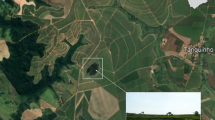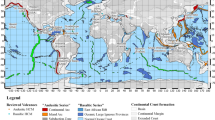Abstract
A phased multi-disciplinary approach was used to investigate potential environmental impact on the overburden aquifer and karst (bedrock) aquifer from the historic use of a suspected fire training pit at the former Marietta Air Force Station in Lancaster County, Pennsylvania. Investigation techniques have included direct push technology, real-time sample analysis via use of a mobile laboratory, earth resistivity imaging/induced polarization, geophysical borehole logging, packer testing, installation of one multi-port well with five sampling ports set in the karst aquifer, installation of multiple conventional monitoring wells, and completion of multiple rounds of groundwater sampling and data analysis. Both the vertical and lateral extents of groundwater contamination by chlorinated volatile organic compounds were delineated in the overburden and karst aquifer. The pathway-focused human health risk assessment has indicated that groundwater remediation is required to meet the federal and state health standards for volatile organic compounds. Based on the hydrogeological conditions and the nature and extent of the delineated contamination, plumes in both the overburden and karst aquifers, chemical oxidation (in the karst aquifer), and enhanced bioremediation (in the overburden aquifer) have been selected as the preferred alternatives for groundwater remediation, with monitored natural attenuation included as a common component of both alternatives.









Similar content being viewed by others
References
Anderson PM (1984) Movement of contaminants in groundwater: groundwater transport-advection and dispersion in studies in geophysics, groundwater contamination. National Academy Press, Washington
Berg TM, Christine MD (1981) Atlas of preliminary geologic quadrangle maps of Pennsylvania, Map 61. In: Berg TM, Christine MD (eds) Pennsylvania geological survey, Fourth Series, Harrisburg
Cherry JA, Parker BL, Keller C (2007) A new depth-discrete multilevel monitoring approach for fractured rock. Ground Water Monit Rem 27(2):57–70
Deeb R, Hawley E, Kell L, O’Laskey R (2011) Assessing alternative endpoints for groundwater remediation at contaminated sites. ESTCP Project ER-200832
Environmental Security Technology Certification Program (2011) Guidance protocol: environmental restoration project ER-0518, application of nucleic acid-based tools for monitoring monitored natural attenuation (MNA), biostimulation, and bioaugmentation at chlorinated solvent sites
ERT Inc. (2015) Remedial investigation and feasibility study report, suspected fire training pit, former Marietta Air Force Station, Lancaster County, Pennsylvania
Fetter CW (1999) Contaminant hydrogeology. Prentice Hall, Upper Saddle River
Gelhar LW, Welty C, Rehfeldt KR (1992) A critical review of data on field-scale dispersion in aquifers. Water Resour Res 28(7):1955–1974
Inc Foothill Engineering Consultants (2000) Site investigation report. Former Marietta Air Force Station, Marietta
Kennel JR (2008) Advances in rock core VOC analyses for high resolution characterization of chlorinated solvent contamination in a dolostone aquifer (Thesis), Waterloo, Ontario, Canada
Kueper BH, McWhorter DB (1991) The behavior of dense, nonaqueous phase liquids in fractured clay and rock. Ground Water 29:716–728
Langan Engineering & Environmental Services (2006) Remedial investigation/Final Act 2 Report, suspected former Fire Training Pit, Marietta Air Force Station, Lancaster County, Pennsylvania
Li P, Qian H, Wu J (2014) Origin and assessment of groundwater pollution and associated health risk: a case study in an industrial park, northwest China. Environ Geochem Health 36(4):693712. doi:10.1007/s1065301395903
Lipson DS, White KA (2014) Groundwater remediation in karst terranes: state of the practice. Abstract in NGWA Groundwater Summit, Denver, Colorado
Loop CM, White WB (2001) A conceptual model for DNALP transport in karst ground water basins. Ground Water 39(1):119–127
Malcolm Pirnie (2002) Guidance to site managers at army installations: groundwater evaluation and development of remediation strategies where aquifer restoration may be technically impracticable, prepared for United States Army Environmental Center
National Research Council (1994) Alternatives for ground water cleanup. National Academy Press, Washington
Neuman SP (1990) Universe scaling of hydraulic conductivities and dispersivities in geologic media. Water Resour Res 26(8):1749–1758
Newland PQ (2015) The development, application and acceptance of environmental and health risk assessment methodology for MAR schemes in South Australia. Environ Earth Sci 73:77397745. doi:10.1007/s1266501434063
PADEP (2011) Statewide health standards. Land Recycling Program
Pennsylvania Department of Environmental Protection (PADEP) (2002) Pennsylvania’s land recycling program, technical guidance manual, section IV—general guidance. 253-0300-100
Plett JH (2006). Metolachlor and TCE Plume characteristics in a Dolostone aquifer using a transect (Thesis), Waterloo, Ontario, Canada
Teutsch G, Sauter M (1991) Groundwater modeling in karst terranes—scale effects, data acquisition, and field verification. In: Proceedings of the Third Conference on Hydrogeology, Ecology, Monitoring, and Management of Ground Water in Karst Terranes, Nashville, Tennessee, December 4–6, 1991: National Ground Water Association, pp. 17–54
USACE (2005) Engineering evaluation/cost analysis, suspected fire training pit, Marietta Air Force Station Formerly Used Defense Site, Lancaster County, Pennsylvania
USEPA (1998) Technical protocol for evaluating natural attenuation of chlorinated solvents in ground water, EPA/600/R-98/128
USEPA (2002) Risk assessment guidance for superfund, volume I: human health evaluation manual (Part D: standardized planning, reporting, and review of superfund risk assessments). OSWER, Washington, D.C. Publication 9285.7-47
USEPA (2004) Johnson and Ettinger model for subsurface vapor intrusion into buildings. Groundwater Advanced, Version 3.1
USEPA (2015) OSWER technical guide for assessing and mitigating the vapor intrusion pathway from subsurface vapor sources to indoor air. OSWER Publication 9200.2-154
Williams PW (1983) The role of the subcutaneous zone in karst hydrology. J Hydrol 61:45–67
Zhou W (2001) Numerical simulation of two-phase flow in conceptualized fractures. Environ Geol 40(7):797–808
Zhou W, Wheater HS, Johnston PM (1997) State of the art of modelling two-phase flow in fractured rock. Environ Geol 31(3/4):157–166
Author information
Authors and Affiliations
Corresponding author
Rights and permissions
About this article
Cite this article
Randrianarivelo, M., Zhou, W. & Barsa, M. Remedial investigations of karst aquifers: a case study at former Marietta Air Force Station, Lancaster County, Pennsylvania. Carbonates Evaporites 34, 233–247 (2019). https://doi.org/10.1007/s13146-017-0369-y
Accepted:
Published:
Issue Date:
DOI: https://doi.org/10.1007/s13146-017-0369-y




